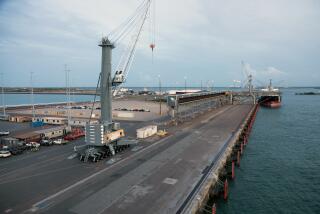Diplomatic Ties With Opossum?
- Share via
Would Washington be a better place if there were kangaroos swimming across the Potomac or grazing on the White House lawn?
It’s not your everyday question, to be sure, but it is one that can be asked in the capital of Australia, which is altogether a peculiar sort of place, with or without politicians.
To begin with, if certain misguided people had gotten their way, the U.S. women’s soccer team would have been playing its Olympic semifinal match today in Thirstyville, Australia.
Or perhaps it might have been in Emu, or Shakespeare or Wheatwoolgold or Opossum.
Those were all names that were proposed when the nation’s capital was constructed, more or less like Disneyland, in a rural, out-of-the-way corner of New South Wales three-quarters of a century ago.
Australia is filled with tongue-twisting place names and the city that sprang up out in the bush might just as easily have been called Eucalypta, Myola, Gladstone, Cromwell, Kookaburra or even Sydmeladperbrisho, borrowing the first few letters of the six state capitals, had the vote been different.
Instead, city founders settled on Canberra.
It’s an odd, entirely artificial community, 40 miles from the nearest major highway. At first glance, it appears nothing more than a collection of government buildings, monuments, museums and national galleries around a man-made stretch of water, Lake Burley Griffin, with the very Disneyish 450-foot Capt. Cook Memorial Jet Fountain spouting from its center.
The lake, a much larger version of the sort of thing you’d find in, say, Mission Viejo, is named after an American, Walter Burley Griffin of Oak Park, Ill., the architect who designed the city.
Canberra and its suburbs are home to about 309,000 people. Even so, the city, set in 900 square miles of what is called the Australian Capital Territory--sort of an outback District of Columbia--has an empty, alien feel to it.
More to Read
Go beyond the scoreboard
Get the latest on L.A.'s teams in the daily Sports Report newsletter.
You may occasionally receive promotional content from the Los Angeles Times.




